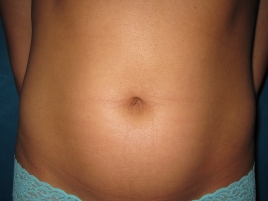Dr. Horton Spotlights Liposuction in Q&A Interview
Recently, our Plastic Surgeon, Dr. Karen Horton, took some time to answer some of our questions regarding liposuction, a procedure ranking as the second most popular cosmetic surgery procedure in the past year according to ASAPS. Below is her informative Q&A session, highlighting the different types of liposuction and different uses for the body contouring procedure.


What percentage of your patients receive liposuction?
I perform liposuction nearly every day that I am operating in my practice. Over 60% of my patients have some form of liposuction during their surgical procedure. Some patients have a procedure that specifically focuses on liposuction, while others have liposuction added as a complementary technique to further contour areas of their bodies that we are focusing on. Examples of when liposuction is used to help compliment surgical procedures include a tummy tuck (abdominoplasty), a breast lift or a breast reduction. Liposuction additionally contours the surrounding regions so that we achieve the very best possible aesthetic result for many different surgical procedures. It is a very common component of a Mommy Makeover as well!
I also use liposuction as a reconstructive tool for many of my breast cancer patients, particularly after a microsurgical breast reconstruction such as a DIEP flap or a TUG (inner thigh) free flap. Liposuction is frequently used to help contour a flap after it has healed and to further improve the appearance of their “donor site” (the area where skin and fat is taken from) in advanced breast reconstruction techniques.
During the consultation process, how do you help patients decide whether to undergo standard liposuction, ultrasonic liposuction, or power-assisted liposuction?
Each patient I see in consultation for liposuction, or for body contouring in general, is carefully evaluated to determine if they are a good candidate for liposuction as part of their procedure. The best candidates for liposuction are individuals who are healthy and relatively physically fit, near or at their ideal body weight, have no major medical problems such as diabetes or high blood pressure, and have good skin tone and elasticity of their tissues. They must also have realistic expectations for what liposuction can and cannot achieve.
Liposuction is for body contouring only; it is not a procedure that will drastically change someone’s weight, and it will not drastically improve cellulite or skin tone overall. Just like after weight loss, we expect skin to contract to the new contour. Liposuction will achieve this effect in specific targeted areas of the body.
Each technique of liposuction has specific indications, and each patient’s fat distribution; quality and personal situation is taken into account when deciding which procedure is best for them. I carefully match the available techniques to each patient’s personal situation, their anatomy and our goals for surgery. I also have no problem educating patients if liposuction is in fact NOT the best procedure for them! Education is paramount, and in my practice, my goal is to empower patients so that they can make the most informed decisions about their bodies.
Can any liposuction patient be a candidate for each technique?
Sometimes I perform different types of liposuction on different parts of the body, based on the patient’s anatomy or past history of liposuction procedures. For instance, UAL is generally used for the back, flanks, male breast tissue or areas of redo liposuction, while traditional SAL is best for the abdomen, hips, thighs and neck.
Is there anything else you’d like patients to know about liposuction at your practice?
Liposuction can also be used to harvest free fat grafts, also known as “lipofilling.” Free fat grafting is a technique that I commonly add to breast cancer reconstructions as a final contouring step after their initial reconstructive procedure. Fat grafting can help fill in any areas, such as a “hollow” or depression in the area beneath the collarbone, that still need contouring after either an implant or a flap reconstruction. We can expect approximately 50% of the fat cells to survive after free fat grafting, and it is only used to fill in small areas. Unfortunately, fat grafting cannot be reliably used to reconstruct an entire breast at this time in a single procedure; however, with small areas of lipofilling, patients get the benefit of fat injected into a small localized area that is in need of some filling, while getting liposuction at the same time!
Schedule a Consultation
If you are interested in learning more about liposuction, please contact us today to schedule a consultation with Dr. Horton. She will be happy to discuss your goals and help you determine if liposuction is right for you.
